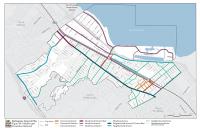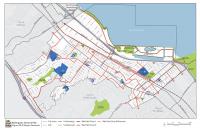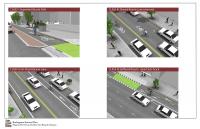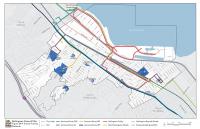Bicycle Facilities
Oftentimes the approach to addressing traffic congestion is to expand and redesign roadways to better accommodate cars and trucks. However, these improvements can be costly, eliminate or impinge upon businesses, and cause environmental damage. Promoting and providing facilities that encourage bicycling and other forms of active transportation can present cost-effective solutions to address these challenges while providing additional community benefits.
Convenient and safe bicycling is a way of life in cities throughout the world. In addition to getting from here to there cheaply, cyclists are able to introduce healthful physical activity into their daily routines. Any trip made by bicycle supports environmental goals related to air quality improvements and greenhouse gas emission reductions.
In Burlingame, bike trips can be relatively easy on the flatlands, provided the infrastructure is in place to encourage riders with skills ranging from those of the casual user to the enthusiast. This may consist of a simple striped and signed lane. In the hillside neighborhoods, biking can be more of a challenge due to terrain, but bike facilities nonetheless can be provided to link homes to parks and schools. Burlingame is committed to establishing and maintaining a citywide bicycle network that provides convenient internal circulation and links to regional facilities. Bike facilities will be installed as shown on Figure M-2, and the planned physical changes to the circulation system will be coupled with policies and programs that support biking, including requirements for secure bicycle parking and bicycle safety education.
The bicycle facilities shown on Figure M-2 consist of four classes that are used throughout the U.S. Figure M-3 illustrates typical cross sections for each class.
Goal: M-3
Develop a network of high-quality, convenient, safe, and easy-to-use bicycle facilities to increase the number of people who use bicycles for everyday transportation.



